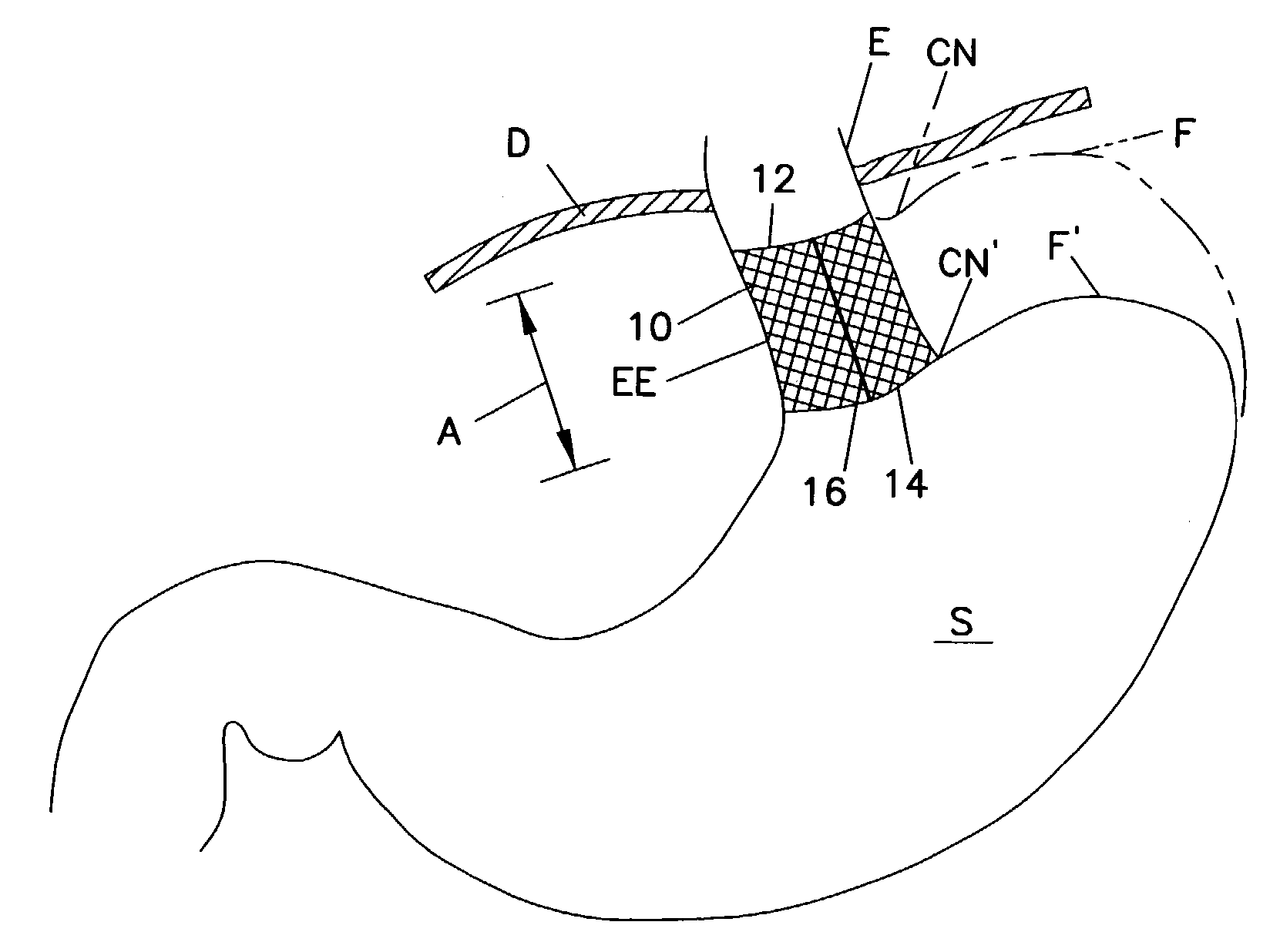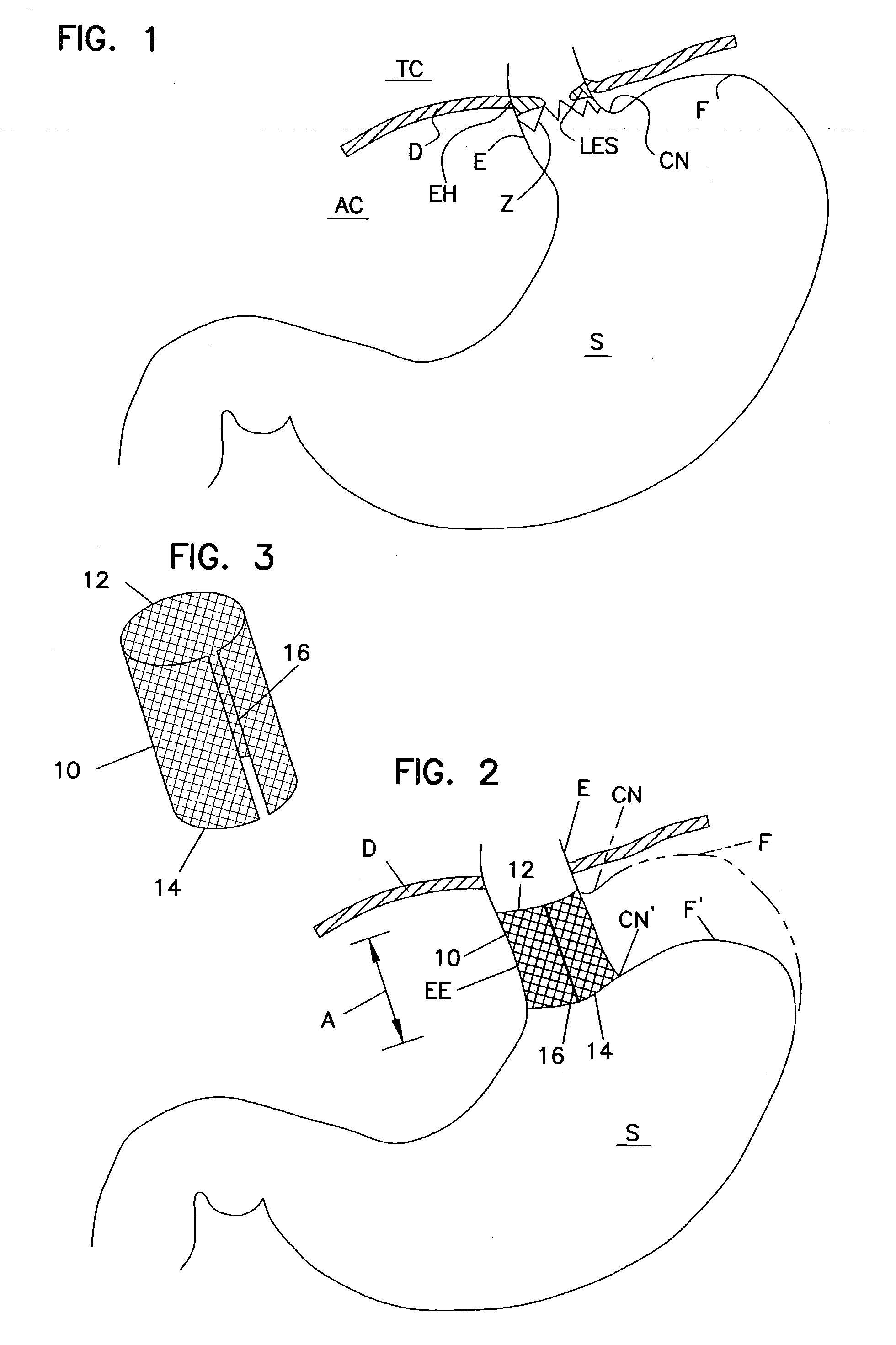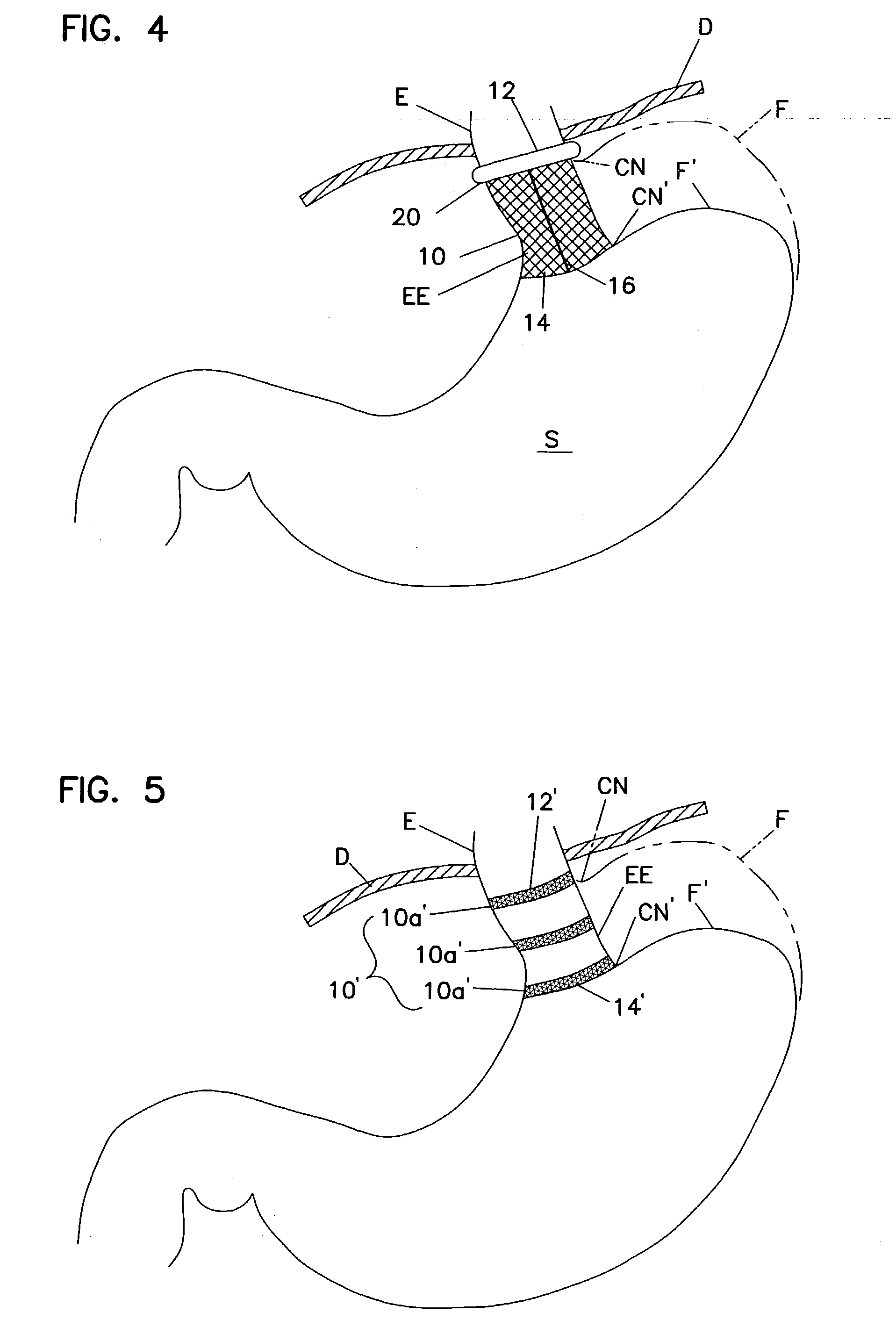Gastro-esophageal reflux disease (GERD) treatment method and apparatus
a gastro-esophageal reflux disease and treatment method technology, applied in the field of gastro-esophageal reflux disease (gerd), can solve the problems of gastro-esophageal reflux disease, elusive nature and complexity of gerd, and achieve the effect of preventing nocturnal reflexes and avoiding excessive bending
- Summary
- Abstract
- Description
- Claims
- Application Information
AI Technical Summary
Benefits of technology
Problems solved by technology
Method used
Image
Examples
Embodiment Construction
[0040] With reference now to the various drawing Figures in which identical elements are numbered identically throughout, a description of the preferred embodiment of the present invention will now be described.
[0041] With initial reference to FIG. 1, relevant portions of a patient's gastrointestinal tract are schematically shown for ease of illustration. A lower esophageal sphincter LES is shown positioned within the esophagus E in the region of the diaphragm D. In FIG. 1, the LES is shown exaggerated for the purpose of illustration. The esophagus passes through an esophageal hiatus EH in the diaphragm D. The lower esophageal sphincter LES normally provides control of reflux of contents of the stomach S into the esophagus E.
[0042] The internal lining of the esophagus E has a cell structure substantially different from the internal lining of the stomach S. The internal lining of the stomach S is substantially thicker than that of the esophagus E. Further, the internal lining of the ...
PUM
 Login to View More
Login to View More Abstract
Description
Claims
Application Information
 Login to View More
Login to View More - R&D
- Intellectual Property
- Life Sciences
- Materials
- Tech Scout
- Unparalleled Data Quality
- Higher Quality Content
- 60% Fewer Hallucinations
Browse by: Latest US Patents, China's latest patents, Technical Efficacy Thesaurus, Application Domain, Technology Topic, Popular Technical Reports.
© 2025 PatSnap. All rights reserved.Legal|Privacy policy|Modern Slavery Act Transparency Statement|Sitemap|About US| Contact US: help@patsnap.com



